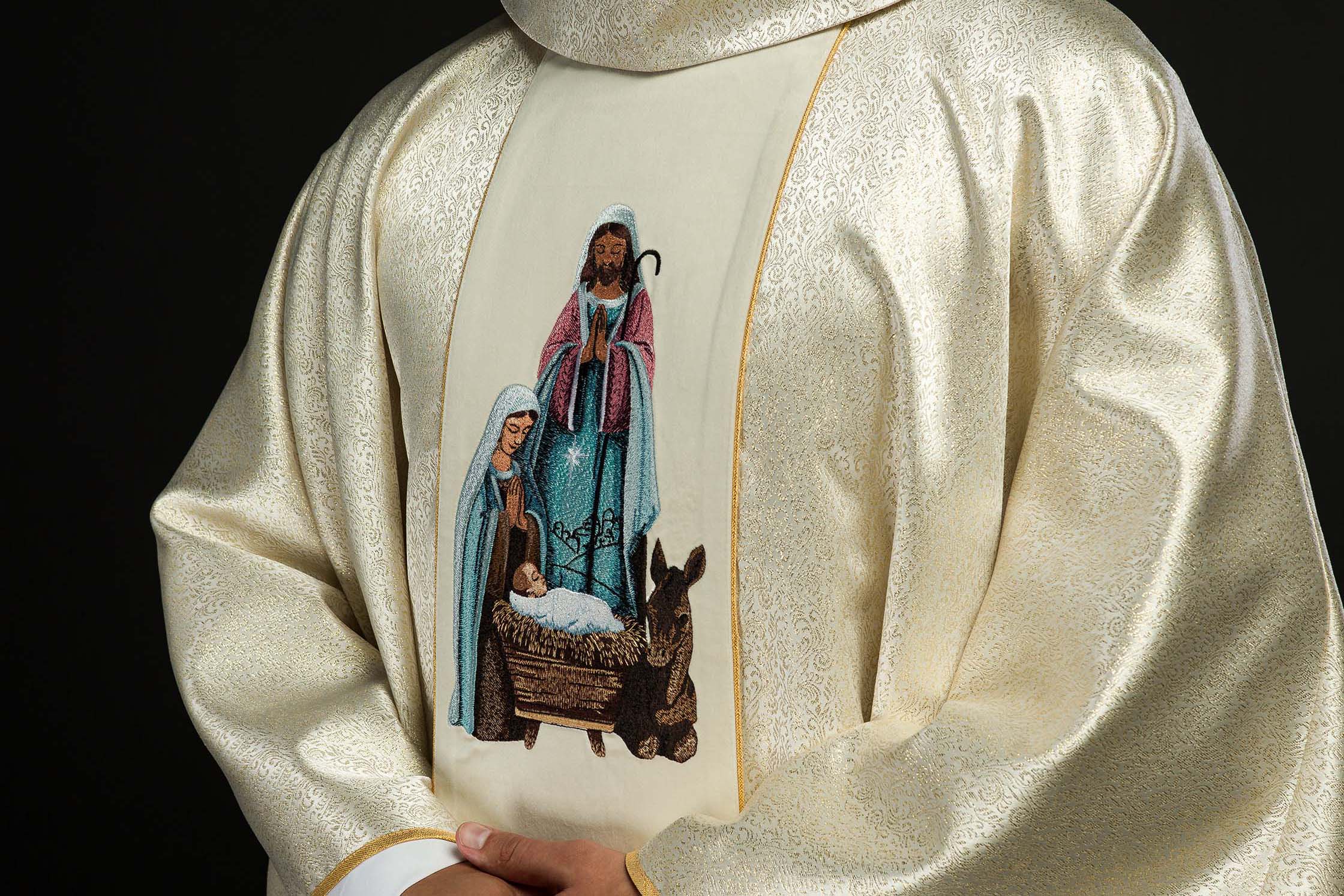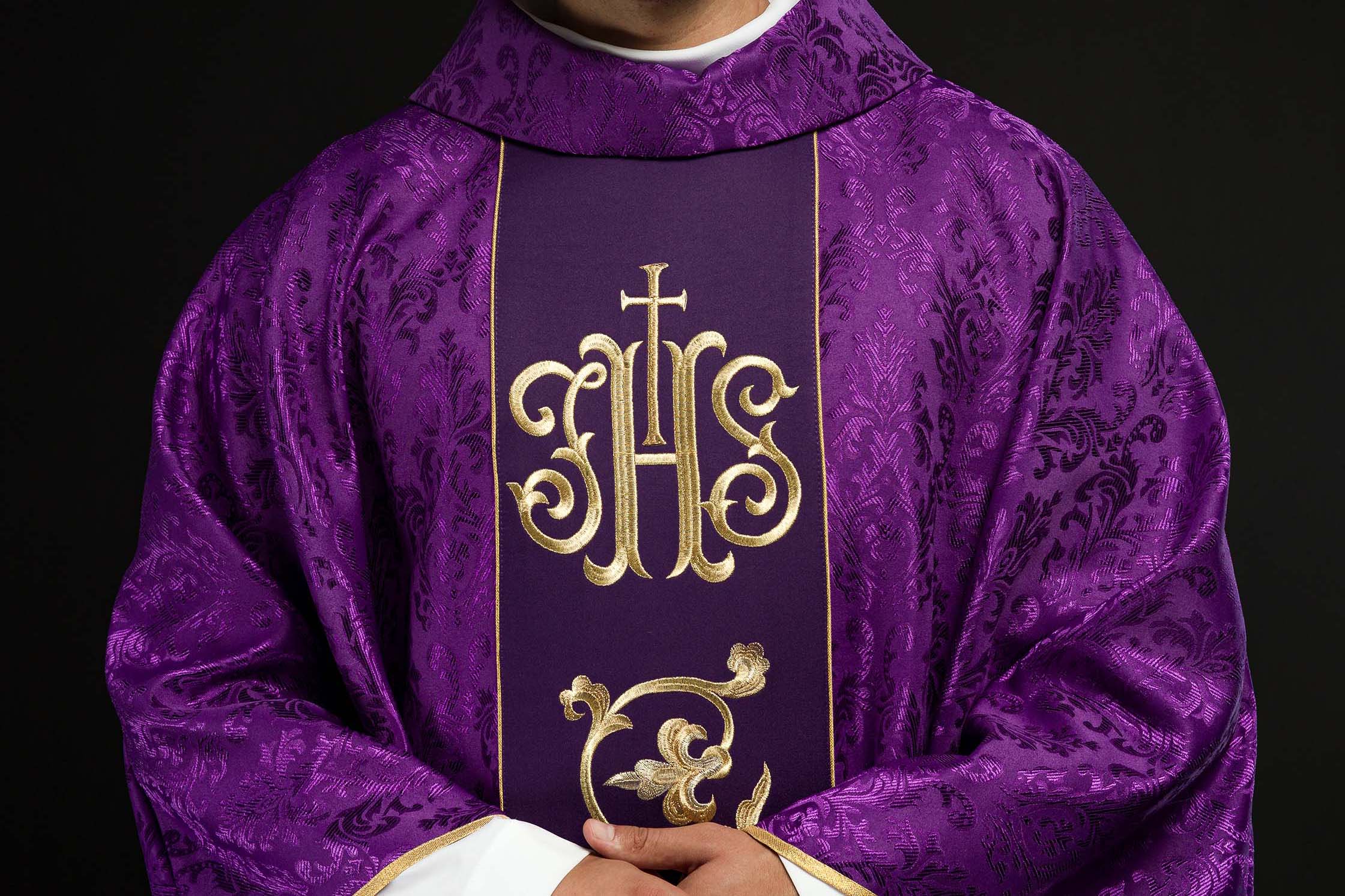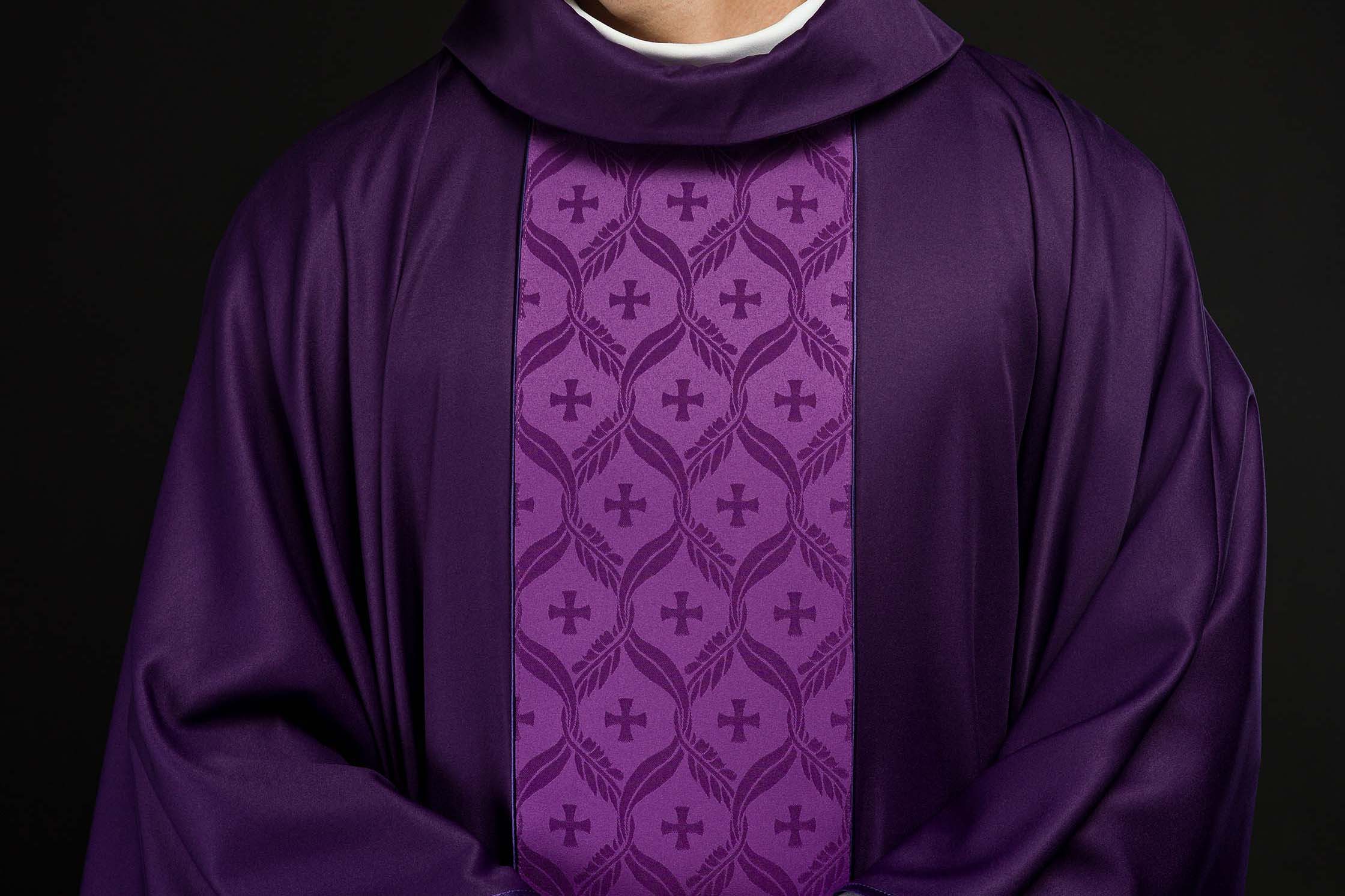
How to Choose the Perfect Christmas Vestment: A Guide for Clergy and Parishioners
How to Choose the Perfect Christmas Chasuble: A Guide for Clergy and Parishioners
Christmas is a time of unique, solemn character that deserves special celebration. One of the key elements of this liturgical celebration is liturgical vestments, especially chasubles, which priests wear during Mass. Choosing the right chasuble for such a solemn period as Christmas is not only a matter of aesthetics, but also of deep symbolism and tradition. In this guide, we will discuss what to look for in order to choose a chasuble that perfectly reflects the spirit of the holidays, while ensuring comfort and dignity during the liturgy.
What Makes a Chasuble "Christmassy"?
Chasubles associated with Christmas usually refer to the colors and symbolism of this holiday. The most common colors are white and gold, which symbolize purity, joy, triumph, and the divine light of the Child Jesus. White is the color of celebration and adoration, and gold emphasizes the majesty and royalty of the newborn Christ. However, one cannot forget about green, which symbolizes hope and life, as well as red, which refers to love and sacrifice, although it is less often used as the dominant color for Christmas. Embroidery patterns often depict biblical scenes related to the Nativity, such as the manger, the Star of Bethlehem, angels, as well as symbols of the New Testament – the Lamb of God, IHS, or grapevines and ears of wheat, symbolizing the Eucharist.
Materials from Which Christmas Chasubles Are Made
The quality and type of material from which the chasuble is made are fundamental to its presentation, wearing comfort, and durability. For the Christmas season, fabrics with a rich texture and shine are often chosen, which emphasize the solemn character of the liturgy.
Velvet
Velvet is a luxurious fabric, soft and pleasant to the touch, with a characteristic, deep shine. Velvet chasubles look very dignified and elegant, perfectly suited for the most important liturgical holidays. Their main advantage is the deep color and spectacular appearance that catches the eye. Their disadvantage may be their weight, especially in warmer rooms.
Jacquard Fabrics
Jacquard fabrics are characterized by distinct, jacquard patterns woven directly into the structure of the fabric. They can be made of various types of fibers, often with the addition of gold or silver threads, which gives them a unique shine and elegance. They are usually lighter than velvet, and at the same time very effective, making them an excellent choice for festive celebrations.
Polyester and Blends
Modern polyester fabrics or their blends with other fibers (e.g., cotton) are often chosen for their durability, lightness, and ease of care. Many of them are specially designed for the production of liturgical vestments, have a subtle sheen or patterns imitating more expensive materials. They are practical and fit well on the body, providing comfort during long services.
Fabrics from Natural Fibers (Linen, Cotton)
Although less common as the main materials for solemn Christmas chasubles, fabrics from natural fibers can be used as decorative elements or to provide greater breathability. Linen and cotton are valued for their naturalness, breathability, and comfort for the skin.
Embroidery and Its Significance in Christmas Chasubles
Embroidery is an integral element of decorating liturgical vestments, and for Christmas time it takes on special significance. Embroidery patterns can tell a story, convey a theological message, or simply emphasize the solemn character of the holiday.
The Most Popular Embroidery Motifs for Christmas
- Star of Bethlehem: A symbol of light, hope, and navigation for the Wise Men, symbolizes the coming of Christ into the world.
- Manger with the Child Jesus: A direct reference to the central figure of Christmas.
- Angels: Messengers of good news, accompanying the birth of Jesus.
- Monogram IHS or Chi Rho: Classic Christian symbols, emphasizing the Divinity of Jesus.
- Sheep and Shepherds: A reference to the first worshipers of the Child.
- Heart of Jesus or Mary: A symbol of love and divine mercy.
- Eucharistic Symbolism (Ears of Wheat, Grapes): A reminder of the gift of the Eucharist, which is the central point of the Church's life.
Embroidery Techniques
- Computer Embroidery: Allows for the creation of very precise, complex, and repeatable patterns with great accuracy. This is currently the most commonly used method.
- Hand Embroidery: A traditional method, often using gold or silver threads, natural stones, or other precious materials. Chasubles decorated with hand embroidery are usually works of art of the highest artistic and spiritual value.
- Flat Embroidery and Raised Embroidery (Three-Dimensional): Various decorative techniques that give embroideries different depths and textures.
Colors of Chasubles and the Liturgical Period
The choice of chasuble color is closely related to the liturgical period. White and gold dominate for Christmas, symbolizing joy, purity, and solemnity. White is the most traditional and universal color for the period from Christmas Eve to the Feast of the Baptism of the Lord. Gold, as a variation of white or as a standalone color, emphasizes the majesty and joy of celebration. Green can be used in Ordinary Time, but for Christmas we more often see white and gold. Violet is the color of penance and waiting, used mainly in Advent and Lent, so it is not typical for the Nativity of the Lord itself. Red is the color of the Passion of the Lord, the Holy Spirit, and holy martyrs, and pink is used only on two Sundays of Advent and Lent. Pink and red are therefore not standard colors for Christmas.
Practical Tips for Choosing a Christmas Chasuble
When choosing a chasuble, it is worth considering several practical aspects that will affect the comfort and usefulness of the vestment.
Cut and Size
Chasubles are available in various cuts, e.g., Roman (wider, more voluminous) or Gothic (narrower, simpler). The choice of cut should be tailored to the individual preferences of the priest and the liturgical tradition prevailing in the parish. It is also important to adjust the size so that the chasuble does not restrict movement and fits well on the figure.
Wearing Comfort
During long holiday celebrations, the wearing comfort of liturgical vestments is extremely important. The material should be breathable, and the cut should provide freedom of movement. It is worth paying attention to whether the inner lining is pleasant to the skin.
Durability and Care
A Christmas chasuble, like any other liturgical vestment, should be made of durable materials that will allow it to be used repeatedly for many years. Recommendations regarding care are also important – some fabrics may require specialized washing or ironing.
Embroidered Accents
Often for special occasions, such as Christmas, chasubles with richer, more expressive embroidery are chosen. The embroidery can be placed on the chasuble's band, collar, or as the main motif adorning the entire vestment. Gold embroidery on a white or cream background always looks extremely elegant and festive.
When to Consider Purchasing a Chasuble with Stones or Occasional Embroidery?
For special occasions, such as jubilee celebrations of Christmas, or when the parish wants to emphasize the uniqueness of the moment, you can consider purchasing a chasuble decorated with natural stones or made of special fabrics. Occasional embroidery, e.g., referring to a specific liturgical year or event, can add a unique character to the vestment.
Chasubles with Natural Stones
Natural stones, such as citrine, amber, or garnet, woven into the embroidery, add brilliance, elegance, and symbolic meaning to the chasuble. They are often chosen to match the color scheme or symbolism of the vestment.
Personalization and Custom Embroidery
Many companies, including HAFTINA TEXTILE GROUP, offer the possibility of personalizing liturgical vestments, including creating a chasuble with an individually designed embroidery. This is an excellent option if we want the chasuble to be not only beautiful, but also to carry a special, personal message.
Summary – How to Choose a Chasuble That Will Delight
Choosing the perfect Christmas chasuble is a process that should take into account both religious and symbolic aspects, as well as practical ones. The key is to pay attention to the color scheme (white and gold as dominant), the quality of the material (velvet, jacquard), the precision of the embroidery, and its symbolism (star, manger, angels). Wearing comfort, durability, and ease of care are equally important factors. A well-chosen chasuble will not only emphasize the solemn character of Christmas, but will also serve for many years, reminding of the most beautiful gift – the birth of Jesus.
If you are looking for a unique chasuble for Christmas that will be a combination of tradition, craftsmanship, and symbolism, we cordially invite you to familiarize yourself with the offer of the **haftinausa.com** store. We offer a wide selection of chasubles made of the highest quality materials, decorated with intricate embroidery, which will certainly meet the expectations of even the most demanding.
```




